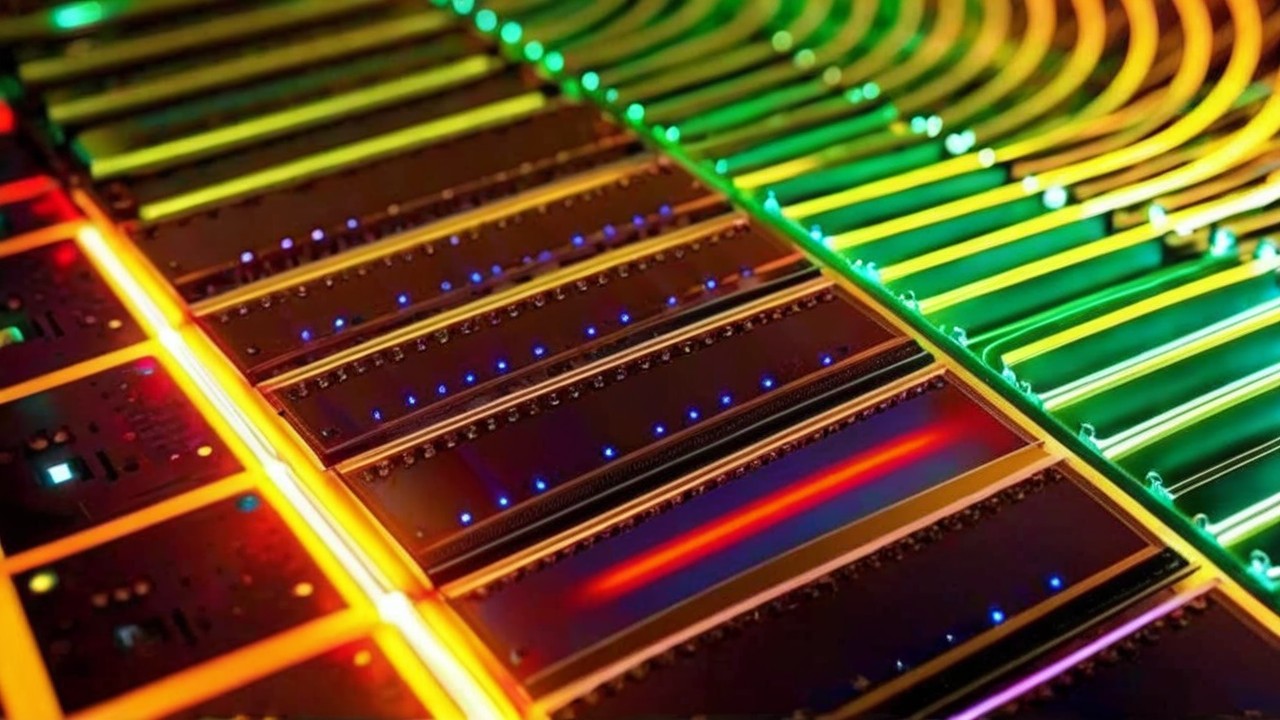
Researchers are developing a new era in computing by overcoming the limitations of Moore’s Law through photonics. This cutting-edge approach boosts processing speeds and reduces energy use, potentially revolutionizing AI and machine learning applications. Photonics, which uses light instead of electricity to process information, offers significant advantages, including lower energy consumption and faster data transmission with reduced latency. One of the most promising approaches is in-memory computing, which requires the use of photonic memories. An international team of researchers has developed a groundbreaking photonic platform to overcome these limitations. The team used a magneto-optical material, cerium-substituted yttrium iron garnet (YIG), which has optical properties that dynamically change in response to external magnetic fields. The new type of memory has switching speeds 100 times faster than state-of-the-art photonic integrated technology, consumes about one-tenth the power, and can be reprogrammed multiple times.
Photonics:
Researchers are using photonics to get beyond Moore’s Law’s restrictions, ushering in a new age in computing. This innovative method reduces energy consumption and speeds up processing, which might transform AI and machine learning applications.
The Moore’s Law trend has led to decades of constantly smaller and more powerful computer and smartphone circuits.
However, physical constraints like the maximum number of transistors that can fit on a chip and the heat produced by densely packed components are bringing this period of steady advancement to a close. As a result, even while the need for processing power is increasing due to data-intensive technologies like artificial intelligence and machine learning, the rate of performance gains is decreasing.
Innovative solutions are needed to overcome these obstacles. Photonics, which processes information using light rather than electricity, is one possible method. Significant benefits of photonics include reduced energy use and quicker, lower-latency data transfer.
Photonic memories are crucial for in-memory computing, one of the most promising methods. These memory allow for very immediate operations through the transmission of light signals. However, issues like slow switching rates and constrained programmability have plagued suggestions for developing such memories.
Innovative Photonic Technologies:
Now, a global group of scientists has created a novel photonic platform to get beyond such restrictions. The Nature Photonics journal reported their findings.
Fast and Effective Photonic Recollections:
Cerium-substituted yttrium iron garnet (YIG), a magneto-optical material whose optical characteristics dynamically alter in response to external magnetic fields, was employed by the researchers. They created a new class of magneto-optical memory by using small magnets to store information and regulate how light moves through the material. In comparison to conventional electronics, the novel platform uses light to conduct computations at far faster and more efficient rates.
The switching rates of this new memory type are 100 times quicker than those of the most advanced photonic integrated technology. They can be configured multiple times to carry out various jobs and use around a tenth of the electricity. The scientists showed that magneto-optical memories can be rewritten more than 2.3 billion times, which translates to a theoretically infinite lifespan, in contrast to the restricted lifespan of existing state-of-the-art optical memories, which can only be written up to 1,000 times.
The results, according to the scientists, may signal the start of a revolution in optical computing and open the door to useful applications soon.
Reference: “Integrated non-reciprocal magneto-optics with ultra-high endurance for photonic in-memory computing” by Paolo Pintus, Mario Dumont, Vivswan Shah, Toshiya Murai, Yuya Shoji, Duanni Huang, Galan Moody, John E. Bowers and Nathan Youngblood, 23 October 2024, Nature Photonics.